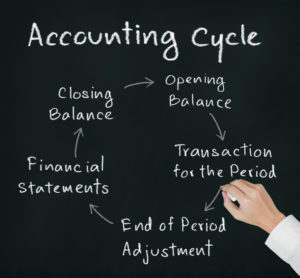Let’s say you have been planning on setting up a haircutting business in Ontario. You have gone through the training, have the necessary experience and maybe a Red Seal Certification to go along with it. Now you want to venture on your own. What do you put in your business plan? Here’s some fuel for your brainstorming session.
Business Registration and Compliance
You can always start as a sole proprietor. It is the cheapest to register out of all the other forms. It also means you own all of the business, its debts, legal and financial and obligations. These are the trade-offs you take in exchange for the ease of starting your practice in this form. If you decide to start as a sole proprietor, you would need to pay for a Master Business License from Service Ontario. They have an online registration service where you can fill-in the required information and pay for it afterwards.
There are business tax considerations as well. For example, you would have to register for an HST account in order to collect and remit HST on services performed. This is mandatory unless you qualify as a small supplier by CRA’s definition. Be sure to check permits, registrations and licenses before your start depending on the nature of your business.
Other forms of business would be a partnership or a corporation. There are articles describing the formation and cost of each, so it is up to you to figure out the best type of formation. You may need to talk to a business lawyer for legal advice before you proceed with your business.
The best resources related to business registration and compliance are the Service Ontario Website, Canada Revenue Agency Website and Canada Business Network Website.
Marketing Research
Section 1: Marketing Mix
Let’s say you’re good to go with the business registration process. Now how do you package your service so that your clients would gladly pay, regularly use, and recommend to their friends and family. You solve this by taking a look at your Marketing Mix.

Kotler, (2014) discusses the Marketing Mix by describing the Four P’s: Product, Price, Place, Promotion. There’s also a definition based on the customer’s perspective: Customer Solution, Cost, Convenience, Communication. These mean that in order to get the customer, you would need to package the service so that:
- it combines the elements of what your customers need or desire;
- in exchange for a mutually agreeable/affordable/competitive purchase price;
- that is easily accessible every time they want to buy it;
- and they can always associate with or remember.
Businesses with the best products combine these elements to gain the perception of being the best value for customer’s money. To find the right mix, you need to describe who your customers are. This falls in the area of Market Targeting and Segmentation.
Section 2: Market Targeting and Segmentation

The easiest way to think of Market Targeting and Segmentation is to think of yourself in relation to your friends. What draws your friends to you? You probably share similar interests, hobbies, or preferences. As a business owner, you need to think of this concept as groups of buyers that share the same interest for your service. Buyers that best fit your services are the targets. Out of all the possible targets, you then profile your “ideal client” and concentrate your marketing activities on them. Now of course, there will be buyers outside of your ideal client base. The important thing is to set a standard and not attempt to market to too broad of an audience.
Section 3: Application
Product
It is important to define your service other than just “haircutting services”. Follow-up questions would be: “What type of haircuts are you most willing to provide?” or better yet “What is your specialty?”. If you prefer men’s hairstyles, then your services would resemble what guys expect from a trip to a barber or men’s salon. Same logic applies for women’s hairstyles. Maybe you prefer hairstyling for specific occasions such as weddings and commercial conventions. You can tailor your service to cater to those types of customers.
In addition you can provide additional services that improve the customer experience during the haircutting session:
- massages
- manicures
- pedicures
- spa services
- selling hairstyle products.
Or how about adding supporting services that make the haircut experience better:
- an advanced appointment booking system;
- an intuitive hairstyle catalog that clients can peruse;
- a streamlined payments system;
- providing transportation services or in-house haircutting services.
Making your services more specific allow you to have competitive advantage. These are the traits that make you stand out against others in the same industry. Differentiating allows you to compete on factors other than price. Competing mainly on price is a bad idea because continuous price cuts reduces your margin, meaning that you might have to serve more customers than you can handle to make a decent profit.
Price
It is common to determine prices for services using the following steps:
- determining all relevant costs then adding a percentage as mark-up;
- basing your price against those of similar competitors within your area; or
- researching what your customers are willing to pay based on the added value of your services.
You can do all three methods to build a range of values your prices could be on.
For example, for a hair salon you would have to determine variable (per haircut) expenses such as hair products and grooming supplies as well as fixed monthly expenses such as:
- rent
- utilities
- insurance premiums
- bank fees
You would also need to estimate how much clients you typically get for a month. Finally, you would add in a percentage of what you want as markup. Your markup should be a reasonable compensation for the service rendered. Your analysis then would look as follows:
Assumptions:
Fixed Cost (Rent, Utilities, Insurance etc.): $3,000 per Month
Variable Cost (Hair products and grooming supplies): $3 per haircut
Average Number of Customers per month: 140 people per month
Mark-up percentage: 50% of cost
Definitions:
Unit Cost – total cost of a haircut service
Mark-up – your expected return per haircut
Break-even Volume: Number of haircuts to cover all expenses
Break-even Sales: Dollar value of haircut service rendered to break-even.
Solving:
Unit Cost = Variable Cost + (Fixed Cost/Average Number of Customers) = $3 + ($3,000/140) = $24.43
Price = Unit Cost * (1+Mark-up Percentage) = $24.43 * (1 + 0.5) = $36.64
Break-Even Volume = Fixed Costs / (Price – Variable Costs) = $3,000 / ($36.64 – $3) = 89.18 or 90 Haircuts
Break-Even Sales = Break-Even Volume * Price = 89.18 * $36.64 = $3,267.56
By using these assumptions, you would need to price your services at $36.64 to meet your requirements and would need about 64% of your monthly sales to cover all related expenses. Whether this would be a good enough start to price your services would depend on how it fairs against the competition and the budget of the target customers within your area.
If competitors in your area charge $10-$25 for very similar services, then you would need to either price your service to match that range or you would need to really make sure your customers know your value for charging a higher priced service. You would also need to make sure that you have enough customers in your area to generate the required revenue each month to reach your quota. You may also need to revise the budget and consider whether it is possible to lower your fixed and variable costs. Other considerations are whether your business is located in a more developed or less developed area so you know if you have the flexibility to increase prices without tempting the customer to switch.
Place
Aside from the design and overall feel of the shop where you conduct business, you also need to think about overall accessibility. Haircutting is a necessary service for people. What you want to do is make it extremely easy for them to go to you when they do decide that they need a haircut. Whether it’s through near 100% accessibility via phone, e-mail or voicemail inquiries, short wait times during walk-ins or a very effective appointment booking process, you would need to figure out how to make it really easy for your customer to visit without unnecessary hassles.
Customers should be able to find your shop and get directions to it so that they can visit. Assessing accessibility would be a combination of your shop being close to public transit stops, having enough cheap parking, bike parking, late-hour or weekend availability etc. Learn your customer’s preferences so that they find you and keep coming back.
Promotion
Your goal should be to make your services extremely memorable to your customers. You have to create a message based on the characteristics of your customers so that they associate with your service. If you have a special service not offered by competitors, your customers should be first to know. If you value repeat service, you may want to create customer programs that encourage such actions. You may also think about strategies that improves payments processing at checkout. You may also want to think about various sales promotions like loyalty discounts, referral programs, anything that helps the customer associate their convenience with your service. Common advertising techniques such as brochures, business cards, social media accounts and other print marketing paraphernalia apply here. It is important to think about how you would want your customers to feel or react once they experience your promotional campaigns.
Management

Your haircutting business will need someone to direct and steer the business from consistent to increasing profitability. This person could be you when you start or someone else you have hired. Whatever the case, they need to have a bird’s eye-view of everything, so that they can set strategies and be able to direct business operations in order to meet profit goals or objectives.
Management duties involve making business decisions that impact the future of your business. You can have someone take a look at your entire operation and make changes so that it runs more efficiently like making the haircut process faster. It could be more specific like having someone study sales patterns to determine peak hours and seasons where it’s advantageous to add more personnel. Someone may also analyze financial, sales, and cash position so that management can decide on buying more equipment to increase productivity in the future.
Accounting and Finance
You need to keep score if you want to know how well you’re doing. Having accurate accounting systems in place allows you to properly record all transactions that happen in your business. As a business person, you need to understand why the system should be there for you use and to take advantage of.
Looking at Past Performance

Accounting systems and the financial statements it produces allow you to evaluate past performance. Have your accountant or bookkeeper help you walk through the analysis of your income statement, balance sheet and cash flow statements because it allows you to understand what’s going on so you can plan and make future decisions. Cash flow statements are important for budgeting because it allows you to keep track of various uses of your cash. Income statements track revenues and their related expenses. Comparing income statements from different time periods help determine sales patterns and trends that you can use for future planning. The balance sheet provides a financial picture of your business for a given period. It tracks what your business currently owns as well as the amount of debt and capital. The statement of owner’s equity tracks the increase or decrease of capital during a time period.
Financing
When applying for funding such as business loans or lines of credit, banks and other financial intermediaries want to look at financial statements in order to assess your company’s liquidity, solvency, operating performance, profitability and risk. A good accounting and financial reporting system provides this critical information to would be lenders and investors. Without these systems in place, it would be extremely hard for your business to acquire any funding because outside lenders or investors have no way of accurately determining your performance and credit standing. This would negatively affect the interest rates that you may have to bear if someone does decide to lend you money.
Capital Budgeting
Financial reporting systems provide management with the information to plan out investment projects. Any purchase of new machinery and equipment, marketing projects and other similar ventures need money to get started. You would need to determine the amount of these resources, alternative funding options and a way to value the return of those viable investments. Financial statements, along with industry and other economic data are used to appraise such ventures and determine whether pursuing an investment project is worthwhile.
Taxation
Canada Revenue Agency requires taxpayers to store and keep financial records and receipts used in preparing annual tax returns. Also, you need to keep this information for at least 6 years from the date of filing the tax return.
Conclusion
Starting a business requires you to have knowledge in the different business functions. Regardless of how the business planning/creation process is implemented, the administration of these functions will remain a constant issue. We were able to provide a point of reference that you can consider when starting. We focused on the marketing function as this is the first and most relevant function when planning out a business. The other functions will support the marketing function and will grow in importance as the business grows.
References
Hurley, M. (2016). IBISWorld Industry Report 81211CA Hair & Nail Salons in Canada. IBISWorld. Retrieved August 18, 2016, from http://clients1.ibisworld.com/reports/ca/industry/default.aspx?entid=1718
Kotler, A. T. (2014). Principles of Marketing. New Jersey: Pearson Education, Inc.

